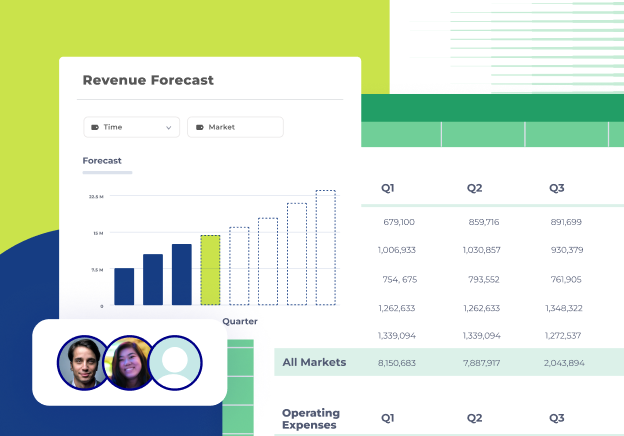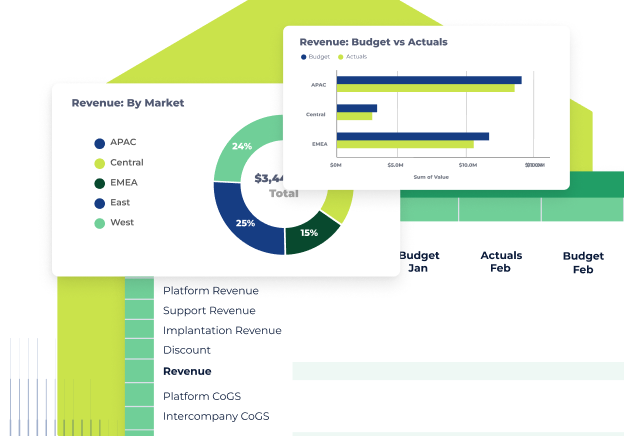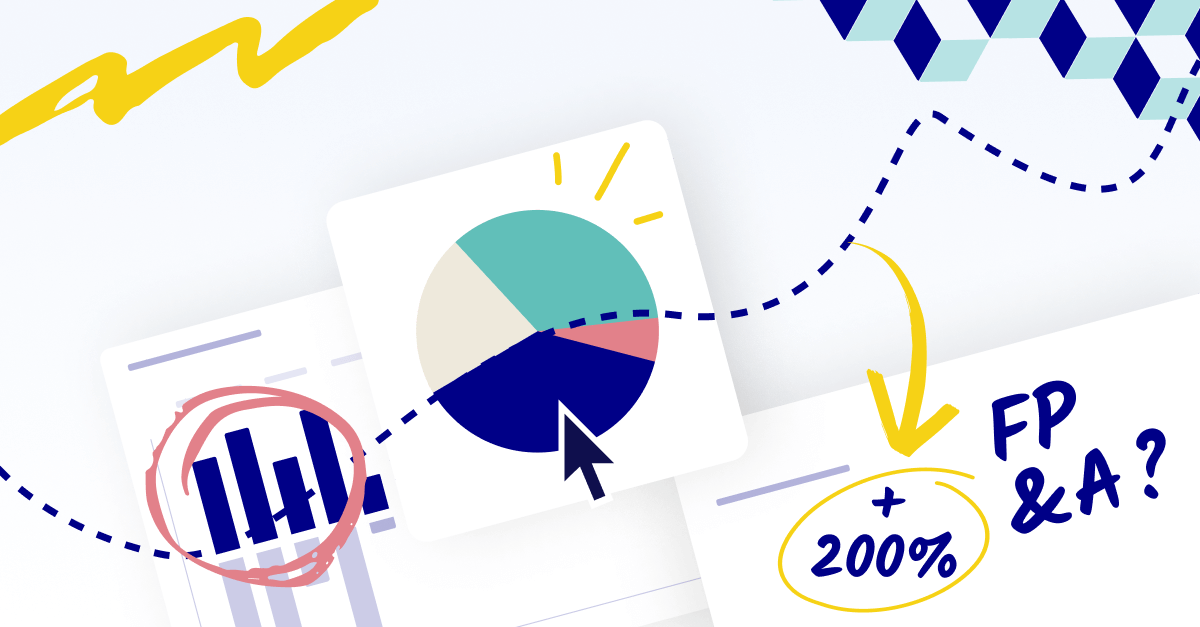What is strategic budgeting?
Strategic budgeting is a forward-thinking way to connect financial planning directly to long-term business goals. It goes beyond traditional budgeting, which often focuses on repeating past patterns with small adjustments. Instead, strategic budgeting ensures that resources are allocated deliberately to support key priorities and steer the organization toward sustainable growth.
It’s about linking every financial decision to the bigger picture. Strategic budgeting evaluates where resources should go based on the company’s goals, whether that’s investing in new markets, improving operational efficiency, or scaling a key product or service. It’s not just about allocating funds but doing so with purpose and alignment.
To make strategic budgeting work, collaboration across teams is essential. It requires ongoing performance reviews, clear metrics, and the ability to adjust plans quickly when market conditions shift. This approach helps finance leaders keep the organization agile while staying true to its long-term objectives. It’s a way to ensure every financial decision serves a goal—and that goal moves the company forward.
Take this free Strategic Finance Assessment to gain valuable insights into your team’s alignment with business goals.
Why is aligning your budgeting with strategic goals important?
When budgets align with strategic goals, they act as a blueprint for making smarter choices. Finance leaders can focus on funding initiatives that drive progress while avoiding unnecessary spending. This clarity helps teams across the business stay focused on priorities, reducing confusion and aligning efforts.
It also creates flexibility. Regularly reviewing budgets against strategic objectives allows finance teams to adjust to changing market conditions or organizational needs. This way, you’re not just reacting to changes but staying ahead of them, all while keeping your long-term goals in sight.
Strategic budgeting example
Imagine your company, a mid-sized consumer electronics firm, is planning to launch a new line of smart home devices in the European market. Through strategic budgeting and alignment, the finance team works closely with leadership to allocate $5 million across critical areas: $2 million for market research to understand regional preferences and regulations, $1.5 million for adjusting supply chains to ensure efficient distribution, and $1.5 million for a marketing campaign tailored to European consumers.
At the same time, the finance team ensures the budget maintains adequate resources—$10 million—to support ongoing product development and marketing efforts in North America, the company’s primary market.
This approach creates a clear, actionable financial plan that balances the company’s expansion goals with the need to maintain performance in its established market. Aligning budgets with strategy enables the company to confidently enter the European market without compromising its core operations.
Take this free Strategic Finance Assessment to determine the strategic alignment of your finance team.
Budgeting strategies for businesses
The right strategic budgeting strategy can help you stay focused on priorities, improve resource allocation, and ensure your teams work toward the same goals. Let’s explore different approaches to budgeting, from top-down and bottom-up budgeting to hybrid and zero-based budgeting, and how they fit into a strategic framework.
Top-down budgeting
Top-down budgeting begins with leadership setting overall financial targets for the business. They then allocate funds to departments or projects based on company-wide goals. This approach ensures that the budget reflects the organization’s broader strategy and that spending aligns with strategic objectives from the start. For example, if growth in a specific market is a top priority, leadership might channel more resources toward marketing campaigns or expanding sales teams in that region.
To make this method work, finance leaders should collaborate with department heads to confirm budgets are practical. Open discussions can help address gaps or concerns early and ensure teams understand how their allocated funds support the company’s goals.
Bottom-up budgeting
Bottom-up budgeting flips the process. Here, individual departments or teams plan their budgets based on their specific needs and expected activities. Once all departments submit their budgets, they’re combined to form the company’s overall financial plan.
This approach encourages ownership and accountability at the team level. For instance, a product development team might budget for new software tools to speed up production, while the customer service team could allocate funds for additional training to enhance support quality.
While bottom-up budgeting empowers teams to take the lead, finance leaders must ensure proposals align with the organization’s priorities. Reviewing and consolidating all submissions helps avoid overspending and ensures the final plan supports long-term goals.
Other budgeting strategies
Some businesses benefit from alternative approaches like hybrid or zero-based budgeting. Hybrid budgeting merges top-down and bottom-up methods, blending leadership-driven priorities with team-level input. It’s a flexible way to balance alignment with collaboration while maintaining strategic focus.
Zero-based budgeting (ZBB), on the other hand, takes a clean-slate approach. Each expense must be justified from scratch, regardless of past budgets. This method works well for identifying inefficiencies or reallocating funds to high-impact areas. While it can be time-intensive, the payoff is a sharper focus on aligning every dollar with the company’s strategy.
Ultimately, there’s no one-size-fits-all solution. The best budgeting strategy is the one that keeps your organization on track toward its goals while allowing for adaptability when circumstances change.
Tips for aligning your budget with strategic priorities
For small and medium-sized businesses (SMBs), where financial agility can make or break success, it’s crucial to see budgeting not just as a numerical activity but as a strategic initiative that guides the company's trajectory.
Think of your budget as a roadmap. It should provide clear directions, ensuring every financial decision pushes the company closer to its goals. For this to happen, it’s essential to create a framework where budget decisions consistently align with both short-term and long-term business objectives.
Creating this framework for achieving strategic alignment might seem challenging—but with the right approach, it becomes intuitive. To set you on the right path, here are nine tips for aligning your budget with strategic priorities:
1. Assess your current strategic alignment
How well does your existing budget align with your business’s strategic vision? Review your current financial plan. Check if the allocations mirror the priorities and ambitions of the company. It's not uncommon to find areas where the budget diverges from intended goals or doesn’t fully support the strategic objectives.
Identifying these misalignments early gives you a proactive edge. It’s not just about ensuring financial efficiency but making sure every financial move aligns with the company's broader purpose.
Use this free financial planning calendar template and align your budget and goals today.
2. Engage stakeholders
It's crucial to involve department leads, such as Sales, Marketing, Human Resources, IT, Operations, and Research & Development, in the budgeting process for organizational alignment.
These leaders have a deep understanding of their respective departments’ needs and challenges. By involving them, you ensure that the budget addresses specific operational requirements while aligning with the organization and broader business goals. This collaborative approach fosters a unified strategy, setting the stage for successful execution.
It's equally important to loop in the executive team. Communicate the budget's objectives and how each department's tasks contribute to those goals. Clear communication across all levels ensures everyone is invested and on board with the strategy.
3. Isolate strategic priorities with zero-based budgeting
Since the ZBB method requires justification for every expense rather than using previous budgets as a baseline, it can be a powerful tool for aligning your budget with strategic priorities. To make the most of this approach, start by clearly defining your organization's strategic goals for the upcoming period.
Next, break down each department’s functions and assess their costs through the lens of those goals. Ask yourself: Does this expense directly contribute to our current priorities? If not, consider reallocating resources to areas with a stronger strategic impact.
Finally, ensure decision-makers are on the same page. Regularly review budgets with leadership to confirm they align with evolving priorities, making adjustments as needed. This rigorous, goal-focused process ensures your resources consistently drive progress where it matters most.
4. Utilize scenario planning
Regardless of its type, every successful budget is built on data. But just having the data isn't enough—you need to make it work for you by leveraging advanced techniques, such as scenario planning.
Scenario planning maps out a range of possible futures and how they might affect the business. By creating a set of diverse scenarios based on various factors and uncertainties, you can test strategic plans against different possible outcomes. When rooted in data, the scenario planning process provides a robust framework for organizations to anticipate change, make proactive decisions, and align their budgets with strategic objectives.

5. Use rolling forecasts to achieve strategic alignment
If there's one constant in business, it's change. Even with a map (aka, a budget), we can't be sure the route we have planned will always be the best route. What if a tree falls across that supply chain path through the woods? Or a large storm (let's call it a high-inflation front) moves in? To get around these changes, you'll need alternative routes—or a flexible budget.
That's the idea behind rolling forecasts. Like traditional forecasts, they are built on historical data, but they are continuously updated with current information (e.g., changing prices, market or industry shifts, and internal operational changes). This allows teams to infer the best path to achieve strategic goals at any given time.
Why are they called rolling forecasts? Well, because they "roll." Unlike traditional forecasts, they have no end date. Rolling forecasts always show you a specific period, say 12 months in advance. So, in March you can see 12 months ahead, in April you can see 12 months ahead, and so on. This makes them especially useful during the long-term planning process (e.g., projects that require longer than a year to complete).
To maintain strategic alignment, you can adjust your budget as the rolling forecast directs. For example, let's say in April you see a market downturn for the rest of the year. You might redirect some money from long-term projects to short-term, revenue-generating opportunities.
6. Conduct periodic reviews
From time to time, you'll need to assess your budget. This is where periodic reviews come into play. Even the most well-thought-out scenarios can deviate from actual outcomes as the business environment evolves. Regular check-ins, whether monthly, quarterly, or biannually, allow you to recalibrate based on the changing landscape. The frequency of these reviews often depends on the dynamism of your industry.
For these evaluations to be comprehensive, roping in insights from the senior leadership team across various departments and the executive suite is essential. By integrating benchmarking data from peers and conducting variance analyses, you not only assess the accuracy of your predictions but also refine your approach for tighter strategic alignment in subsequent budgets.
7. Build flexibility into your budget
Rather than using exact numbers, you might set a range for specific line items like equipment prices. If equipment prices change, you won't be scrambling to reallocate money from another area—you'll have a built-in buffer.
It's important to arrange your budget line items by their importance. This way, if cuts become necessary, you'll know which items to consider reducing first. While operational expenses typically take precedence, your strategic expenses should also be ranked based on the priority of each strategic goal and its elements.
You should also include a system where department heads can request changes to specific line items. Since they understand how they can achieve goals and are more aware of "on-the-ground" realities, they can help modify the budget as you go.
Lastly, contingency funds should be built into the budget so that if an unexpected event occurs, you won't have to divert from your goals. Create specific line items for each scenario, then allocate funds based on the likelihood and size of the threat.
8. Track KPIs
Key performance indicators (KPIs) serve as measurable signposts, guiding your business toward its strategic objectives. It's essential to select KPIs that resonate directly with your specific goals so you can measure strategic alignment progress. For instance, if improving customer satisfaction is a priority, metrics like customer retention rates and Net Promoter Score (NPS) should be in focus.
Once chosen, set clear, achievable targets for these KPIs. Modern technology and software dashboards can provide a real-time view, allowing you to monitor progress and make adjustments as needed.
Track your KPIs with this customizable financial KPIs dashboard template.
9. Boost data accuracy with FP&A software as your single source of truth
When it comes to budgeting, having a centralized and accurate view of financial data is indispensable. Embracing FP&A software as your "single source of truth" not only ensures consistent data but also streamlines the budgeting process.
Manual budgeting can create barriers to strategic alignment, whereas dedicated FP&A software tools offer dynamic flexibility, facilitating quick adjustments in line with changing business goals. Beyond just consistency, these platforms arm finance leaders with analytics, forecasting tools, and comprehensive reporting dashboards, ensuring that every decision is informed, precise, and in tandem with the overarching business strategy.

Common strategic budgeting mistakes to avoid
Even the most seasoned professionals can occasionally falter. Missteps, no matter how minor, can divert a business from its envisioned path, leading to missed opportunities and inefficiencies. Here are some common strategic budgeting mistakes that companies often make and ways to avoid them:
Budgeting with untrustworthy data
When it comes to recording data, manual error is common—which means flawed forecasts and flawed budgets are a strong possibility. Leveraging technology helps you ensure data is recorded and cleaned automatically. You'll always have a clear view based on the current environment, no matter where you are in your journey.
Being overly optimistic (or too cautious)
During the strategic planning process (and especially when it comes to strategic budgeting), you need to find the right balance between optimism and caution.
Keep your estimates of revenue and expenses conservative to ensure you have a built-in buffer against uncertainty. However, don't be too conservative—you also want to make sure your budget has some wiggle room. After all, you want a plan that's resilient—not so tightly bound that it can't adapt to changing circumstances.
Failing to prioritize tasks
You can't accomplish all strategic initiatives at once so it’s important to use what resources you have in a targeted way. Among competing goals, ask which objectives are most important right now to get your company where you want it to be.
Then, break those objectives down into actionable, time-bound milestones. Consider which tasks will unlock the most value or remove blockers for other initiatives. Prioritize based on impact, urgency, and alignment with your long-term strategy—then communicate those priorities clearly across teams to keep everyone focused.
Not reviewing regularly
Traditional budgeting has given us a "set it and forget it" mentality, but strategically aligned budgeting is not a one-time event—it's a continuous process.
Regularly revisiting your budget allows for timely adjustments, ensuring it remains aligned with your company's goals and the current business environment. Creating a culture of consistent financial reflection means you’re better positioned to address challenges and seize new opportunities.
Secure a successful future for your business with strategic budgeting
Remember, your budget isn't just a document; it's a reflection of your business's ambitions. By consistently aligning financial plans with your strategic vision, you're not only safeguarding your resources but also ensuring your journey forward is as intentional and impactful as possible.
Cube streamlines your FP&A processes to help you focus on maintaining strategic alignment. Request a free demo today.
Or, take this free Strategic Finance Assessment for valuable insights into your team's alignment with business goals.




.png)









.png)






.png)
